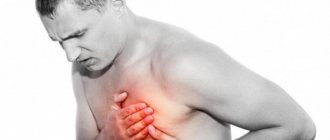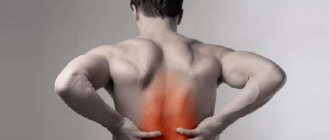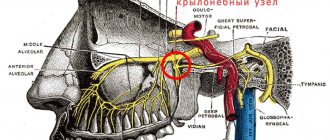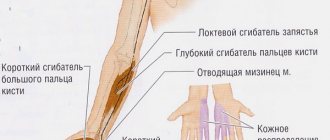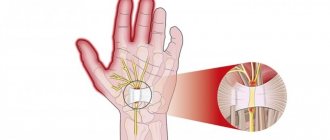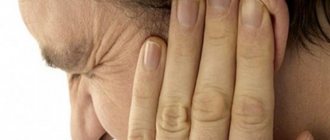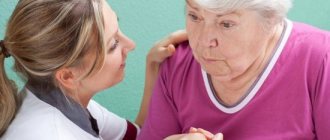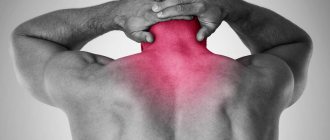Intercostal neuralgia, which in medical circles is also called thoracic radiculitis, is considered a pathological condition that is possible due to compression and irritation of the intercostal nerves. This pathology is characterized by pain , and of high intensity. The main danger of this condition is that its symptoms are inherent in many other diseases of internal organs, such as myocardial infarction or angina. Therefore, it is extremely important to know the manifestations of intercostal neuralgia in order to be able to distinguish it from other more critical conditions. It is left-sided intercostal neuralgia that will be discussed below in our article.
It should be noted that intercostal neuralgia itself is nothing more than pain that is of reflex origin. So, what factors can cause these sensations:
- In the presence of osteochondrosis in an extremely advanced state. In this case, the roots of the intercostal nerves are compressed by intervertebral hernias;
- Other diseases, such as spondylitis, ankylosing spondylitis, advanced kyphosis;
- In case of tumor processes in the area of the spinal column;
- For poisoning of various origins;
- During hormonal disorders during menopause in women;
- Diseases of allergic origin;
- Diseases associated with damage to the nervous system, such as multiple sclerosis, as well as polyradiculoneuritis;
- In such a pathological condition as aortic aneurysm;
- For diabetes mellitus;
- As a response to irritation in the nerve columns during inflammation of the pleura, various deformities of the sternum, pathological processes in other internal organs;
- Due to recently suffered herpes zoster, that is, herpinitis;
- In case of injury during heavy physical activity.
Intercostal neuralgia can also be caused by :
- Hypothermia;
- Prolonged stress;
- Attachment of infection;
- Abuse of alcoholic beverages (due to the toxic effect of the latter on the body and on the nervous system in particular);
- If the body has a deficiency of vitamin B (more often observed with ulcerative lesions of the stomach and duodenum);
- Wearing very tight underwear for women.
Find out more about possible causes of chest pain here
Symptoms of left-sided intercostal neuralgia
In the human body there are twelve pairs of ribs, between which nerve fibers are located. When at least one of these roots is compressed or irritated, a painful attack appears, which refers to one of the sides that is pathologically altered. Manifestations of left-sided intercostal neuralgia are reduced to unilateral pain in the space between the ribs. This pain can also spread to the area of the heart muscle, radiating to the side, left hypochondrium, chest, and also to the scapular region. What is characteristic of such pain?
- Painful sensations become more intense when trying to inhale, as well as during any respiratory movements of the chest (sneezing, coughing);
- The appearance of pain during active physical activity;
- There may be a feeling of discomfort in the spinal column;
- The pain occurs both in the front of the chest and in the back, that is, it has a girdling appearance. At the same time, it does not bother the patient outside the affected area.
- An uncomfortable position of the torso in space can also increase pain in the intercostal space.
- The pain itself in the acute period is burning, as if piercing. And later it becomes aching and dulls. It can last for several hours in a row, and also disturb the patient for several days.
In addition to pain, you can observe:
- spastic muscle contraction;
- hyperemia or, conversely, pallor of the skin;
- Loss of tactile sensitivity in the area of the nerve that is pathologically affected.
Doctors also note that with this neuralgia there may be pain points, palpation of which leads to a new outbreak of pain:
- According to the location of the affected nerve;
- A place to the left of the spine that is directly related to a certain intercostal space;
- To the left of the sternum.
In women, painful attacks may be accompanied by fainting and dizziness due to lack of air, since it is not possible to breathe in deeply; slight expansion of the chest leads to pain.
Self-massage
You can also do a self-massage at home, which can help relieve pain in the hypochondrium. It is carried out slowly, calmly stroking and slightly rubbing the spaces between the ribs or in the hypochondrium with your fingertips. It will also be useful to rub your muscles or warm them up. To do this, you need to clasp your hands and rub your back, starting from the lower back and gradually leading to the shoulder blades.
Diagnostics
In diagnosing neuralgia, there is a need for additional studies, such as ultrasound of the heart, as well as other internal organs that are suspicious. However, ultrasound does not always help to establish the cause of the disease, so today computed tomography and MRI are more indicative and reliable research methods. You can independently diagnose neuralgia in yourself and put aside the problem associated with the heart, using the following data:
- For neuralgia, heart medications such as Validol or Corvalol do not have the desired effect, that is, they do not alleviate the pain attack and do not bring relief;
- If the pain tends to intensify when bending over, changing the position of the body, during coughing or inhaling, then these are signs that the pain is neuralgic in nature. Heart pain does not tend to intensify when changing body position or when coughing or sneezing;
- In pathologies of the cardiovascular system, pain sensations are short-term in nature and begin to bother you after severe stress, bouts of anxiety, or after overwork. Painful sensations with neuralgia have a more persistent and long-lasting course.
Therapeutic treatment of intercostal neuralgia consists of two successive stages:
- Pain is relieved;
- Elimination of inflammation or the cause that became the provoking factor in the development of neuralgia.
The first stage, that is, the fight against pain, includes the following rules:
- Maintain bed rest for 3-4 days;
- Give preference to a hard mattress;
- Treatment includes taking painkillers in the form of tablets, mainly non-steroidal anti-inflammatory drugs, which can not only relieve pain, but also smooth out inflammation;
- Taking muscle relaxants to relieve muscle spasms;
- Include vitamin supplements, tilting towards group B (1,6,12). These vitamins will influence the restoration of affected nerve elements.
If the cause of neuralgia is one or another disease of the spinal column, then in this case it is appropriate:
- Massotherapy;
- Other manual therapy courses;
- Physiotherapy;
- Laser application;
- Acupuncture treatment;
- Application of different types of physiotherapy;
- Osteopathic services.
You can read more about preventive exercises for back diseases here. Such exercises will also help you avoid various pathologies of the spine, give a good load to the muscles, and strengthen them.
Doctors also during the period of therapeutic adaptation:
- Avoid alcoholic beverages;
- Do not expose yourself to situations that may lead to stress;
- Limit or stop physical activity altogether.
Treatment
If a person has pain in the left side or in the front of the chest, then this is a sign that it is time to see a doctor for examination and diagnosis. If a person feels pain in the left side or in the area of the heart, one should not think that it will go away on its own, because the disease will progress and develop into a more severe stage.
After the doctor has diagnosed neuralgia, special treatment is prescribed, which is primarily aimed at relieving pain from the injured nerve. If the stage of the disease in the hypochondrium is acute, the doctor prescribes strict bed rest, as well as comprehensive treatment.
If you have pain in the hypochondrium or left side, it is recommended to sleep and lie on a fairly hard surface.
It is not difficult for an experienced doctor to distinguish nerve inflammation from heart disease, so after making an accurate diagnosis, he prescribes treatment methods that, together, will help treat the disease very effectively and quickly.
If pain is detected in the left side or front of the chest, drug treatment (tablets) is prescribed, which includes the use of painkillers and anti-inflammatory drugs. With their help, it will be effective to treat pain in the hypochondrium, and very soon the patient will be able to feel much better.
Before prescribing pills or other medications, the doctor must carefully examine the patient, take into account his age, the stage of progression of the disease, and also take into account any disease of the gastrointestinal tract.
Also, for pain in the left hypochondrium, physiotherapeutic treatment methods in the form of acupuncture, ultrasound and laser therapy are prescribed. Massage and manual therapy will be an excellent assistant in treatment. Thanks to these procedures, neuralgia will become less disturbing and will disappear completely over time.
Prevention
Preventive measures in most cases are carried out as follows:
- If possible, avoid hypothermia and viral diseases;
- Refuse to carry heavy objects;
- Undergo preventive examinations with a surgeon or orthopedist;
- Treat major diseases in a timely manner;
- Avoid alcohol-containing drinks;
- Strengthen the immune system by taking vitamin complexes;
- Temper the body.
It should be noted that intercostal neuralgia is not a condition that is difficult to cope with. Yes, it brings discomfort to everyday life, which puts the quality of life at risk. However, neuralgia is a warning sign that cannot be ignored , because this phenomenon hides more terrible diseases: diseases of the spine, tumors... Therefore, do not ignore the sensations that arise in your chest - seek help from a specialist, go through everything necessary research.
Ask us a question in the comments below Ask a Question>>
Intercostal neuralgia or thoracic radiculitis is an unpleasant and insidious disease, which is a pathological disease that manifests itself when the intercostal nerves are compressed and irritated.
It is impossible not to notice the first symptoms. This is a sharp pain on the left side of the chest, the so-called “shooting” pain . During an acute attack, it is impossible to inhale or exhale, and there is a feeling of a serious electric shock. This disease is easily confused with other serious diseases. To prevent this from happening, we advise you to read the materials below.
Symptoms in children
It is worth noting that intercostal neuralgia rarely occurs in childhood, however, adults should be aware of the characteristic symptoms of this disease in a child:
- complaints of pain in the chest, shoulder blades, stomach;
- increased sweating;
- cry;
- sleep disorders;
- stuttering.
Know! You can distinguish pain from a disease of internal organs by the nature of the pain. With neuralgia, pain manifests itself and intensifies during movement, quickly subsides at rest.
Intercostal neuralgia on the left
Characteristic is the fact that on the left side of the heart, symptoms of intercostal neuralgia appear most often in women . In men, this disease is localized in the region of the lower ribs on the left. It doesn’t matter at all whether a person plays sports or leads a sedentary lifestyle - the disease appears in both categories.
Children are also susceptible to this disease, but during a period of intensive growth. The similarity of symptoms with a heart attack or heart attack is of great concern; there are cases when these diseases are confused, which leads to panic. Therefore, it is important to be able to distinguish this disease from others and not succumb to panic.
Treatment of intercostal neuralgia on the left with folk remedies
folk remedies used to treat the symptoms of left intercostal neuralgia. And the faster the patient finds the method that best suits him, the faster he will get rid of these unpleasant sensations.
The first group of folk remedies is aimed at relieving pain:
- Ointments and tinctures containing snake venom. Snake venom is rich in various trace elements, enzymes, fatty acids and proteins. It has both a local anesthetic and anti-inflammatory effect. In addition, it increases blood flow to the area of application, which speeds up the recovery process. To enhance the effect, exposure to heat is required, ideally a shawl made of natural wool.
- Ointments based on bee venom . Bee venom contains three main components - melittin, phospholipase and hyaluronidase. Thanks to them, the poison has anti-inflammatory, analgesic, absorbable, and antibacterial effects. Tinctures with bee venom cause a rush of blood to the affected area.
Egg
may also help in relieving symptoms. It needs to be hard-boiled. Then there are two ways to use it: roll it over the chest as a whole, or cut it and apply the halves to the source of pain.- Compresses with salt solution . Salt is known for its anti-inflammatory and soothing effects. You need to prepare a hot saline solution; to do this, add 3-5 tablespoons of salt to 500 ml of hot water, moisten a cloth and apply it to the chest for 2 hours.
- Flaxseed compresses . To do this, several tablespoons of flax seed are steamed, placed in gauze and applied to the sore spot.
- Pepper patch. Apply to clean, oil-free skin. It improves tissue conductivity, has a local distracting effect, relieves tension and relieves pain. If there is no strong burning sensation, the patch can remain on the body for a week.
- You can also prepare several types of ointments: horseradish and black radish juice with Vaseline or turpentine with Vaseline. The latter can be bought at the pharmacy under the name “turpentine ointment”. Its components quickly penetrate the skin and affect the nerves themselves. They cause analgesic, warming and irritating effects.
- Rubbing with the juice of geranium leaves.
- Lotions made from fresh burdock leaves can only be used in summer.
In addition to various rubs, ointments and compresses, various baths in combination with the above methods can also help with intercostal neuralgia.
Let's talk about the three most popular recipes:
Bath with a decoction of poplar and aspen buds
. Both ingredients are easy to find in pharmacies at any time of the year. They need to be boiled for half an hour, strained, poured into a slightly hot bath and soaked in it for 15-20 minutes.- Bath with sage and sea salt . Both components have an anti-inflammatory effect. Half a glass of sage is steamed in hot, but not boiling water, and infused for an hour. Then the infusion is poured into the bath, and sea salt is added there. It takes 15 minutes to take such a bath.
- The third recipe is prepared using eucalyptus and lavender essential oils. 100 ml of milk and a spoon of honey are added to them. This composition helps relieve muscle and nervous tension.
Literature[ | ]
- Jessica Coulter, Edward Kwon.
Otalgia: [English]: [arch. July 15, 2020] // StatPearls. - Treasure Island (FL): StatPearls Publishing, 2020. - Elizabeth Harrison, Matthew Cronin.
Otalgia: [English]: [arch. July 15, 2020] // Australian Family Physician. — 2020. — Vol. 45, no. 7 (July). — P. 493–497. — ISSN 0300-8495. - PMID 27610432. - John Scott Earwood, Tyler Sherrod Rogers, Nicholas Alan Rathjen.
Ear Pain: Diagnosing Common and Uncommon Causes: [English]: [arch. July 16, 2020] // American Family Physician. — 2020. — Vol. 97, no. 1 (January). — P. 20–27. — ISSN 1532-0650. - PMID 29365233. - Sang Hoon Kim, Tae Hyun Kim, Jae Yong Byun, Moon Suh Park, Seung Geun Yeo.
Clinical Differences in Types of Otalgia: [English]: [arch. July 17, 2020] // Journal of Audiology & Otology. — 2020. — Vol. 19, no. 1 (April). — P. 34–38. — ISSN 2384-1621. - doi:10.7874/jao.2015.19.1.34. - PMID 26185789. - PMC PMC4491947. - RC Chen, AS Khorsandi, DR Shatzkes, RA Holliday.
The Radiology of Referred Otalgia : [English] : [arch. July 18, 2020] // American Journal of Neuroradiology. - 2009. - Vol. 30, no. 10 (November). — P. 1817–1823. - ISSN 1936-959X 0195-6108, 1936-959X. - doi:10.3174/ajnr.A1605. - PMID 19797791.
Symptoms and signs of the disease
Intercostal neuralgia is characterized by the following symptoms:
- Pain – aching, dull, burning . It can radiate to the ribs, back, lumbar region, neck and shoulder blades;
- The pain may be stabbing in the sternum area;
- The pain intensifies when inhaling;
- The pain is cyclical , it decreases until it disappears completely, and then appears again;
- Certain areas of the skin may become numb;
- increases ;
- Tingling of the skin;
- Possible redness of the skin;
- Increased temperature with bouts of heat or cold;
- Muscle cramps.
Consequences
The consequences of the disease do not pose a danger or threat to the patient’s life. The negative impact can have indirect consequences in the form of constant pain, lack of sleep against its background, and disruption of the usual rhythm of life.
Since the cause of intercostal neuralgia is usually some more serious disease of the spine, it can worsen its course. Since the pain is especially severe when inhaling, a person reduces the frequency and depth of his breaths, this can lead to oxygen starvation .
Diagnostic methods
To diagnose this disease, the following studies are required:
- Ultrasound diagnostics of the heart and kidneys, to exclude diseases with similar symptoms;
- In case of inaccurate diagnosis, computed tomography may be used;
- Magnetic resonance imaging (MRI);
- Chest X-ray
- Examination by a doctor;
- Electroneurography;
- General urine analysis;
- General blood analysis.
If after several studies the diagnosis is confirmed, then a whole range of studies is not required. This will save both time and money for the patient.
During pregnancy
Intercostal neuralgia is a common occurrence among pregnant women. During this wonderful period, the load on the spinal column increases, and the growing uterus increases pressure on the internal organs, which leads to pinching of the intercostal nerve.
In this case, the pain is accompanied by the following symptoms:
- The pain radiates to the heart, stomach and shoulder blades;
- The pain is acute , localized in the intercostal space on the left;
- As pregnancy progresses, the course of the disease worsens.
Treatment in this case is symptomatic and only after consultation with a doctor. Often, the disease goes away on its own after childbirth.
Non-drug therapies
When the acute period of neuralgia is eliminated and the pain decreases slightly, non-drug therapy can be used to more quickly restore the functions of the affected areas. In particular, such methods include:
- massotherapy;
- manual therapy;
- physiotherapy;
- acupuncture;
- physiotherapy.
Therapeutic massage helps improve metabolic processes in muscles, which helps reduce pain and eliminate swelling. Physical therapy helps strengthen the muscles of the spine, however, it is worth remembering that exercises should only be selected by a doctor. Magnetic therapy, electrophoresis, laser therapy and UHF are indicated as physical procedures.
It is advisable to consolidate the resulting effect of the massage with manual therapy. During this procedure, the doctor acts directly on the displaced vertebrae. During such procedures, the vertebrae return to their natural position, the gaps between them widen and pinched nerves are released.
Prevention measures
There are a number of preventive actions that reduce the manifestations of the disease to a minimum.
In this case:
- It is necessary to avoid hypothermia, drafts, heavy lifting, and alcohol consumption.
- Regular examinations by a doctor are required
- Hardening the body and strengthening the immune system will also be a good
Symptoms of left intercostal neuralgia are observed in patients with heart disease. Therefore, it is extremely important to timely differentiate intercostal neuralgia or thoracic radiculitis. Left-sided intercostal neuralgia is a pathology characterized by compression of the nerves of the chest. The disease manifests itself with severe pain in the chest area.
Notes[ | ]
- Ear pain: [arch. 09.09.2019] // Internal medicine. - empendium.com. — Date of access: 07/15/2020.
- Harrison, Cronin, 2020, p. 493.
- ↑ 12
Harrison, Cronin, 2020, Discussion, p. 493. - Otalgia - Symptoms, prevention and treatment. - emportal.ru. — Date of access: 12/12/2015.
- Chen, Khorsandi, Shatzkes, Holliday, 2009, Fig 1. Otalgia arising from head and neck sources, p. 1817.
- ↑ 12
Coulter, Kwon, 2020, Introduction. - Chen, Khorsandi, Shatzkes, Holliday, 2009, Significance, p. 1817.
- Kim et al., 2020, Discussion, p. 37.
- Medline Plus, Causes.
- ↑ 12345
MedlinePlus, When to Contact a Medical Professional. - Earwood, Rogers, Rathjen, 2020, History, p. 20.
- Chen, Khorsandi, Shatzkes, Holliday, 2009, Diagnostic Work-Up for Referred Otalgia, p. 1817.
- ↑ 1234567
Coulter, Kwon, 2020, History and Physical. - ↑ 12
Harrison, Cronin, 2020, Table 2. Causes of otalgia, p. 494. - ↑ 12
MedlinePlus, Home Care. - ↑ 1234
Earwood, Rogers, Rathjen, 2020, Risk Factors for a Serious Diagnosis References in Patients with Otalgia, p. 27.
Why does the pathological condition occur?
Thoracalgia is not an independent disease and occurs as a result of the development of diseases of internal organs or other disorders. The cause of intercostal neuralgia may be severe osteochondrosis, in which case the nerve roots of the thoracic region are compressed due to the impact of the hernia on the spine.
Tumors of the spinal column can similarly affect the nerve fibers of the sternum. The following pathologies can cause intercostal neuralgia:
- hormonal disorders, diabetes or menopause;
- multiple sclerosis and polyradiculoneuritis;
- aortic aneurysm;
- stomach or duodenal ulcers;
- herp infection that occurs after herpes zoster;
- allergic reactions;
- pleural inflammatory processes and various deformities of the thoracic region.
Food, drug or alcohol poisoning often leads to chest pain. This occurs due to the effect of toxins on the nervous system and the body as a whole. Thoracic radiculitis may occur due to other factors, which include:
- hypothermia;
- stressful situations and constant worries;
- exposure to infection;
- lack of B vitamins;
- underwear that is too tight;
- physical stress.
How does the pathology manifest itself?
The chest consists of 12 pairs of ribs, between which are nerve roots. When one or more of them decompresses, pain occurs. Intercostal neuralgia on the left is determined by the unilateral manifestation of pain. In such cases, pain radiates towards the heart and hypochondrium. They can spread under the shoulder blade, with patients experiencing:
- increased pain during chest movements (during inhalation and exhalation, when sneezing or physical activity);
- discomfort in the spine area;
- spread of pain beyond the affected area;
- the appearance or exacerbation of pain in an uncomfortable position.
In this case, the arthralgia itself can be aching, dull or burning. The person freezes in one position. He rarely inhales or exhales to avoid an attack of pain. The following symptoms of the disease appear:
- Spasmodic muscle contraction.
- Redness or excessive paleness of the skin in the area of nerve damage.
- Innervation in the area of localization of the compression process.
There are certain areas where pain occurs upon palpation:
- an area on the back to the left of the spine, with which a certain intercostal space is connected;
- part of the direct lesion;
- on the left side of the chest.
A separate group includes characteristic signs of intercostal neuralgia in women (dizziness and fainting). This is due to difficulty breathing and lack of oxygen. In men, the pain is localized on the lower ribs on the left side.
Pain on the left under the ribs 8212 causes, symptoms, treatment
What could it be
Such a painful sensation occurs in a variety of acute and chronic diseases of the body systems or organs. It can also appear after injuries of varying severity and after surgical interventions. Therefore, before you start fighting such a problem, you should find out exactly what its main causes are. And only an experienced, competent specialist can do this. To begin with, it is recommended to categorically refuse self-medication and go to the hospital.
Causes and symptoms of pain in the left hypochondrium
The reasons for this can be very different.
- All kinds of kidney diseases. As you know, this organ is responsible for removing harmful waste and toxins from the body. They leave along with urine. If stones form, then this function of this organ is disrupted and fluid may begin to accumulate in the body. In this case, the pain usually begins in the back and then begins to radiate forward. They are usually pulling and weak.
- Problems with the spleen.
- Rib injuries. If there is any damage to them, the pain can be simply unbearable. In this case, the person has difficulty moving and feels constant severe discomfort. Bruising may even be visible in the area in question. The question of why the pain appeared in this case should not arise.
- A disease of older people is diverticulitis. The most common diet, or rather proper nutrition, will help you cope with this problem.
- Intestinal obstruction or increased gas formation. In addition, additional symptoms such as nausea, vomiting and problems with stool will appear. The reasons for gas retention can be different, and this phenomenon can cause serious discomfort to a person.
- This list also includes problems with the spine, and, in addition, various diseases of the urinary tract.
Pain in the left hypochondrium radiates to the back
In this case, most likely there are problems with the spleen. This may be an inflammation of this organ, which should be treated as soon as possible under the close supervision of an endocrinologist. Or even a ruptured spleen. True, in this case the pain will be sharp and cutting. As a rule, it suddenly becomes painful for a person to breathe and move. In this case, it will be necessary to place some cold object on his left side and call an ambulance as soon as possible.
Pain radiating not only to the back, but also to the left arm, accompanied by shortness of breath and loss of consciousness, also requires the same emergency assistance. Most likely, this is a myocardial infarction, so the person requires emergency medical care.
Accompanied by nausea
If the pain is dull and aching and an additional symptom is nausea, this most likely indicates gastritis. With high acidity, discomfort occurs when a person is hungry, and with low acidity, discomfort occurs after eating.
If it occurs after eating
Back pain immediately after lunch or an hour after it indicates problems with the pancreas. For example, it could be pancreatitis. Additional symptoms are vomiting, loss of appetite, bloating, diarrhea. To completely eliminate it, you will need a comprehensive multi-stage course of treatment.
Type of pain: strong, stabbing, pulling, sharp, constant, girdling, dull
Depending on the type of pain, the doctor will usually try to determine what caused it. Many people believe that the most dangerous thing is severe or sharp back pain. In fact, this is not true at all. Some serious diseases are virtually asymptomatic. Only occasionally does the patient feel discomfort and nagging pain. That is why you should go to the hospital if you experience pain of any severity and duration.
If a sharp, severe pain occurs, for example, after a fall, as a result of an accident or any injury, then you should not try to get to your feet and move, it is best to fix yourself in one position and call an ambulance
Such precautions will help protect a person from possible additional harm.
Most often in such cases, the spleen is injured, because it is located very close to the surface of the skin.
How to treat?
It is difficult to definitively answer the question of how to treat pain on the left side under the ribs. After all, therapy will completely depend on what disease caused it. Treatment should always be aimed at the main cause of the pain. After the disease, one of the symptoms of which is such pain, is completely cured, it will also quietly disappear along with all other signs. The main thing is that the treatment is completed.
Diagnosis and treatment of the disease
To clarify the nature of the pain syndrome, it is necessary to conduct an ultrasound examination of the heart and internal organs. If necessary, computed tomography and magnetic resonance imaging are performed, which are among the most effective diagnostic methods. You can determine the cause in the sternum yourself. If the pathology is caused by abnormalities in the functioning of the heart, after taking Validol or Corvalol, pain in the thoracic region weakens or disappears. If the pain intensifies when sneezing, taking a deep breath, coughing or changing position, the pathology is of neurological origin. Such manifestations are not characteristic of heart disease. When the pain is caused by lesions of the vascular system, it passes quickly, but can worsen during stressful situations or excitement. This type of intercostal pathology often occurs as a result of overwork. The exact cause of the development of neuralgia in the thoracic area can be determined by a doctor based on hardware examination data.
Treatment of sternal neuralgia is aimed at 2 main goals:
- pain relief;
- elimination of the factor that provoked the pathological condition.
It is allowed to take painkillers from the group of non-steroidal anti-inflammatory drugs. To suppress spasms, doctors prescribe muscle relaxants. Preparations containing B vitamins help restore the nerve fibers located between the ribs.
Taking medications
To eliminate the symptoms of the disease in question, the following medications are taken:
- Ibuprofen has antipyretic, analgesic and anti-inflammatory effects due to the suppression of prostaglandin biosynthesis and obstruction of the production of the enzyme cyclooxygenase. Rapidly absorbed from the gastrointestinal tract, concentrating in the blood after 2 doses. Processed and excreted by the liver. Contraindicated in ulcerative colitis, renal impairment, liver failure, hemophilia and diseases of the optic nerve. Individual intolerance is possible. Analogues: Diclofenac, Piroxicam, Voltaren, Indomethacin.
- Sedalgin has an analgesic, hypothermic effect. Effective by inhibiting the production of allogenes in the periphery. Stabilizes cell membranes. Has a stimulating effect on the nervous system. Contraindications: thrombocytopenia, acute allergic reactions, hypersensitivity to auxiliary components, hepatic porphyria. Analogues: Analgin, Spazgan.
- Clonazepam reduces the excitability of subcortical areas of the brain and disrupts their interaction with the cortex. Inhibits polysynaptic spinal reflexes. Contraindications: hypersensitivity, disturbances of consciousness and breathing (central origin), respiratory failure, glaucoma, myasthenia gravis, severe liver dysfunction. Analogues: Aklofen, Sirdalud.
Complementary therapy
To ensure successful treatment, the regimen must be followed. It is necessary to provide the patient with peace and comfort. It must be in a horizontal position. The use of hard mattresses is indicated. Recommended:
- Avoid stress and anxiety.
- Reduce physical activity.
- Stop drinking alcoholic beverages.
If the development of neuralgia is caused by pathologies of the spine, it is advisable to use the following methods:
- manual treatment is a complex of various therapeutic techniques and techniques for diagnosing diseases (mainly in the field of orthopedics);
- therapeutic massage;
- acupuncture;
- a course of physiotherapy - the use of physical means (movement, heat, water);
- therapeutic physical culture (PT) is a treatment method based on the use of physical exercises;
- Laser therapy is one of the methods of physiotherapy. Therapeutic use of optical radiation, the source of which is a laser;
Alternative techniques
Treatment of intercostal neuralgia involves long-term use of various pharmaceutical drugs, which affects health. Nanoplast forte is a new generation product that allows you to reduce the chemical effect on the body, effectively relieving pain and inflammatory processes. It is valid for 12 hours.
It is easy to use and effective due to its unique composition. By stimulating blood circulation, you can reduce the amount of painkillers and NSAIDs you take. The patch is fixed in the area of the ribs, while avoiding the left side of the thoracic region. If osteochondrosis is present, the patch can be glued to the projection of the exit of the spinal nerves. Nanoplast can be used in the area of direct damage to the nerve and its projection (on the back, in the upper parts of the spinal column). The product is fixed in the morning and throughout the day, but its use during sleep is not excluded. Treatment lasts 10 days.
- Prevention of acute respiratory diseases.
- Periodic examinations by an orthopedist.
- Timely treatment of diseases of internal organs and systems.
- Limit alcohol consumption and quit smoking.
- Strengthening the immune system, taking vitamins, eating right and exercising.
To prevent neuralgia, you should avoid hypothermia, stress and severe physical activity. Hardening will help activate the body's defenses. Intercostal neuralgia does not pose a health hazard, but indicates the presence of potentially dangerous diseases.
Causes
The reasons that can cause neuralgia are different - it could be a pinched nerve in the thoracic region or a pinched intercostal nerve. The causes of neuralgia may also be the following:
- stressful situation;
- strong physical activity;
- hypothermia;
- any previous infection;
- allergic reaction;
- in case of hormonal imbalance in women;
- various diseases of the nervous system;
- diseases of internal organs and so on.
It must be remembered that symptoms of neuralgia are also possible due to excessive muscle tone.
What other causes of pain could there be? These are a lack of vitamins in the body, age-related changes in the body, diabetes, and diseases of the intestinal tract. All this plays a big role in the development of intercostal neuralgia, therefore, if at least one symptom is detected, it is necessary to seek medical help.

